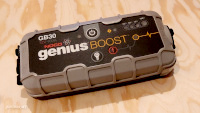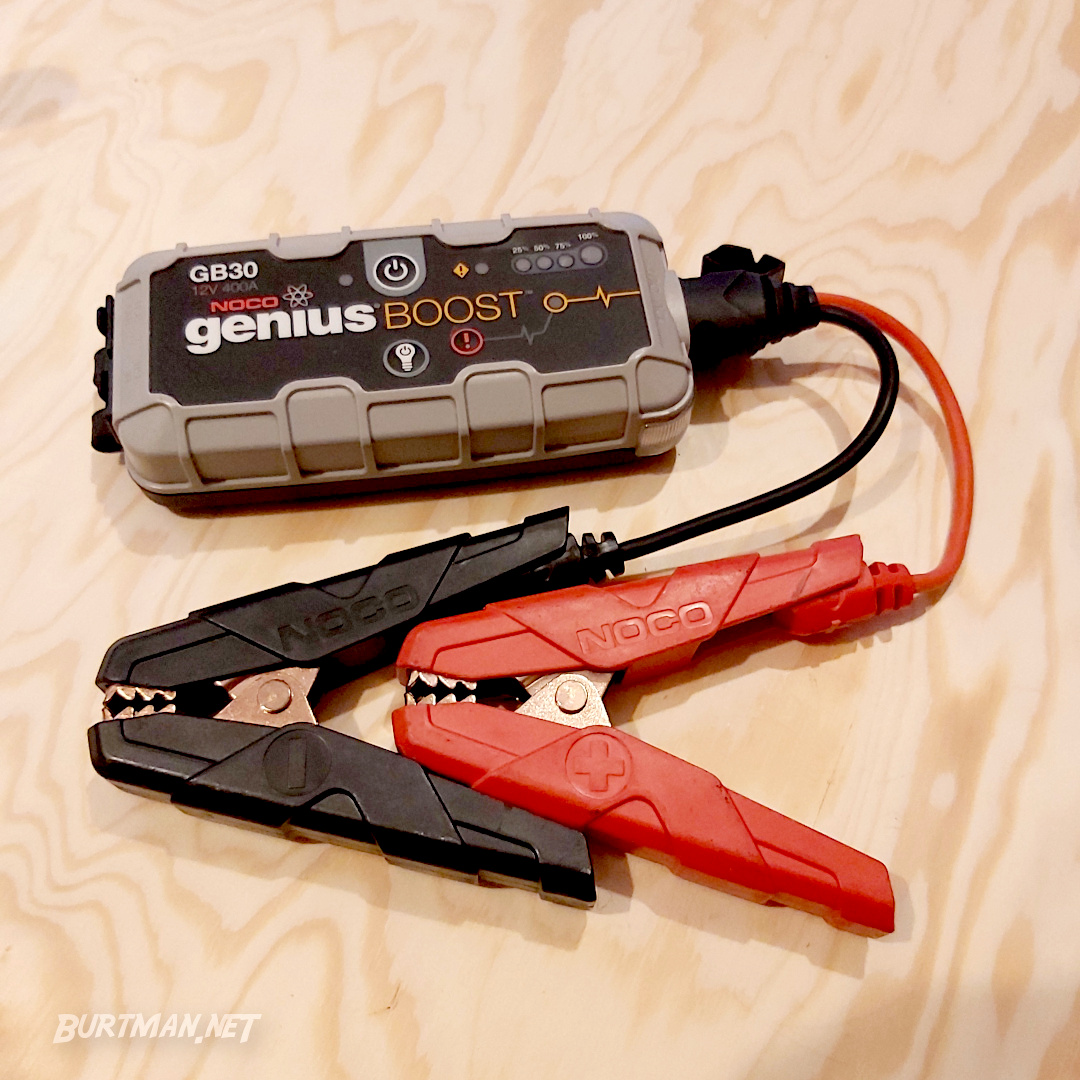Jump Starter Tool
How To Jump Start A Vehicle (Part 3 Of 3)
Updated:
Do not, under any circumstances, leave the jump starter connected and powered on for more than the short period (~15-30 seconds) specified in the manual. Doing so can result in fire or explosion. 400A+ is an extremely high current for such a small battery to sustain for long periods and it will almost certainly malfunction or worse, if strained.

Youtube: googlevideo.com, youtube-nocookie.com.
Another, increasingly popular option, is to carry a relatively-inexpensive device called a portable jump starter. It's essentially a small battery capable of delivering a huge 400+ Amps for a very short period of time. There are several brands available and I have had moderate success with a couple of them. These devices are only supposed to be used for a very short time and then left to rest and cool. Once the vehicle is running, you can plug the jump starter into the lighter socket and charge it back up.
This option works well for batteries that are a bit too flat to start the engine, but not completely dead. If the engine doesn't even try to start, then the battery is likely too dead for this option to be successful and will require a proper charge (possibly overnight).
1. Connect the red clamp to the positive (+) connector on the dead battery, or to the jump start point, if present (see page one for info).
2. Connect the black (-) clamp to an exposed (unpainted) section of the vehicle body, engine block, or bolt in the engine bay (again, see page one).
3. Turn on the jump starter (read the manual first to ensure you know how long to leave it on for). Depending on how dead the battery seems to be, you may choose to repeat these three steps several times (with the appropriate cooling period in between) before proceeding to step 4.
4. With the jump starter still providing power, attempt to start the engine in the usual way. If the engine is still not starting, go back to the top. It's important to note that a single charge may only offer you between five and 10 jump starts, so don't waste them trying to start the engine before it's had time to get enough charge to start.
There are two main types of jump starter.
The light duty types look like this and typically cost under €100.

Portable and reasonably cheap. For occasional use.
The heavy duty types cost a lot more but they work very well for even really dead batteries. This is the type the recovery service will carry.

Heavy and very expensive. For profession recovery services and regular starting of large engines. Temporary image.
Important
Even when your engine starts from a jump starter, the battery is still very low. Do not turn the engine off for at least 15 minutes, otherwise it may not have charged sufficiently to start the engine the next time you need to, and you will be in the same position all over again.
Any Recommendations?
If you have another option you would like me to include in this article, or if you spotted something incorrect, please let me know in the comments.
You need to enable javascript from Youtube (and possibly others), in order to see this video.
Sign In To Leave A Comment
There are no comments marked as public for this item.
Stay Up To Date





 For When Things Go Wrong (And They Will)
For When Things Go Wrong (And They Will) Read around 1,100 times
Read around 1,100 times For Everyone
For Everyone